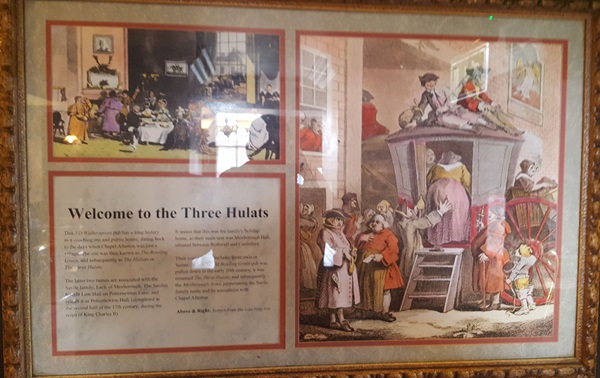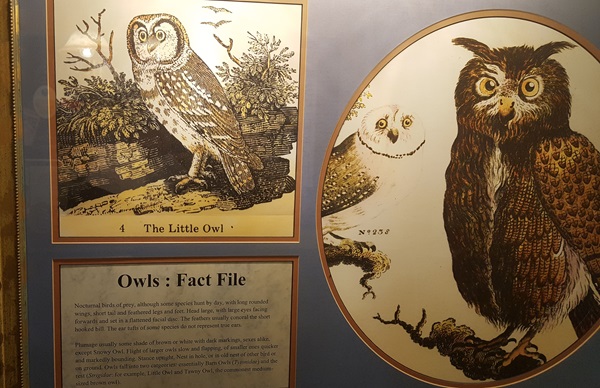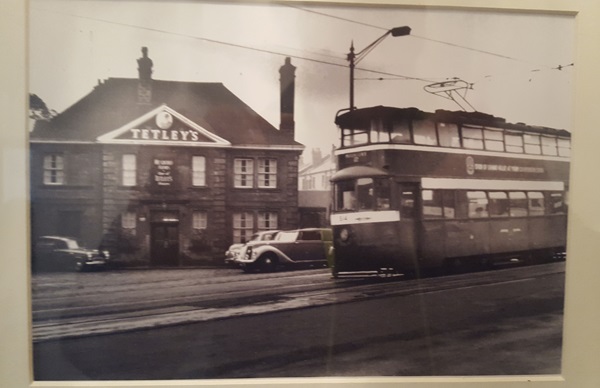13 Harrogate Road, Chapel Allerton, Leeds, West Yorkshire, LS7 3NB
The name of this pub recalls Chapel Allerton’s historic connection with the Savile family, earls of Mexborough, whose coat of arms includes three hulats or owls. The site has a long history as a coaching inn and public house, dating from the days when Chapel Allerton was just a village. The site was then known as The Bowling Green, but subsequently as The Hulats or The Three Hulats.
Illustrations and text about The Three Hulats.

The text reads: This J D Wetherspoon pub has a long history as a coaching inn and public house, dating back to the days when Chapel Allerton was just a village. The site was then known as The Bowling Green, and subsequently as The Hulats or The Three Hulats.
The latter two names are associated with the Savile family, Earls of Mexborough. The Savile family bought Low Hall on Potternewton Lane, and rebuilt it as Potternewton Hall (completed in the second half of the 17th century, during the reign of King Charles II).
It seems that this was the family holiday home, as their main seat was Mexborough Hall, situated between Rothwell and Castleford.
Their coat of arms includes three owls or ‘hulats’. When the old Bowling Green pub was pulled down in the early 20th century, it was renamed The Three Hulats, and subsequently the Mexborough Arms, perpetuating the Savile family name and its association with Chapel Allerton.
Above and right: Scenes from the coaching era.
Illustrations and a fact file about owls.

The text reads: Nocturnal birds of prey, although some species hunt by day, with long rounded wings, short tail and feathered legs and feet. Head large, with large eyes facing forwards and set in a flattened facial disc. The feathers usually conceal the short hooked bill. The ear tufts of some species do not represent true ears.
Plumage usually some shade of brown or white with dark markings, sexes alike, except Snowy Owl. Flight of larger owls slow and flapping, of smaller ones quicker and markedly bounding. Stance upright. Nest in hole, or in old nest of other birds or on ground. Owls fall into two categories: essentially Barn Owls (Tytonidae) and the rest (Strigidar: for example, Little Owl and Tawny Owl, the commonest medium-sized brown owl).
An old photograph of Chapel Allerton.

External photograph of the building – main entrance.

If you have information on the history of this pub, then we’d like you to share it with us. Please e-mail all information to: pubhistories@jdwetherspoon.co.uk